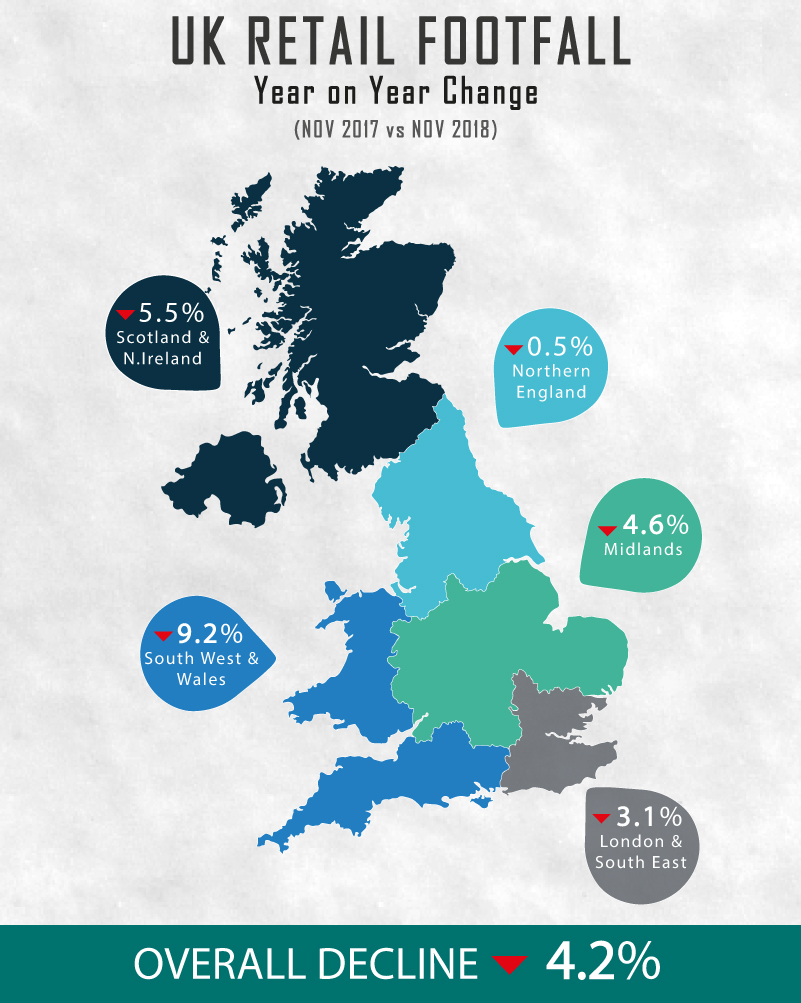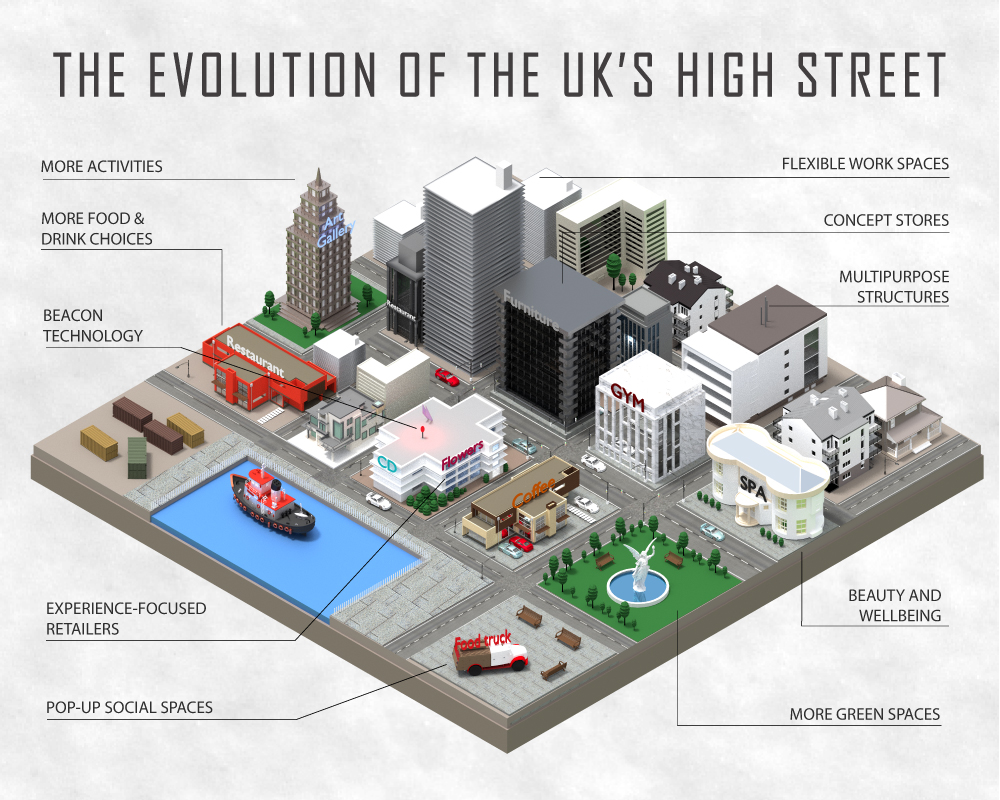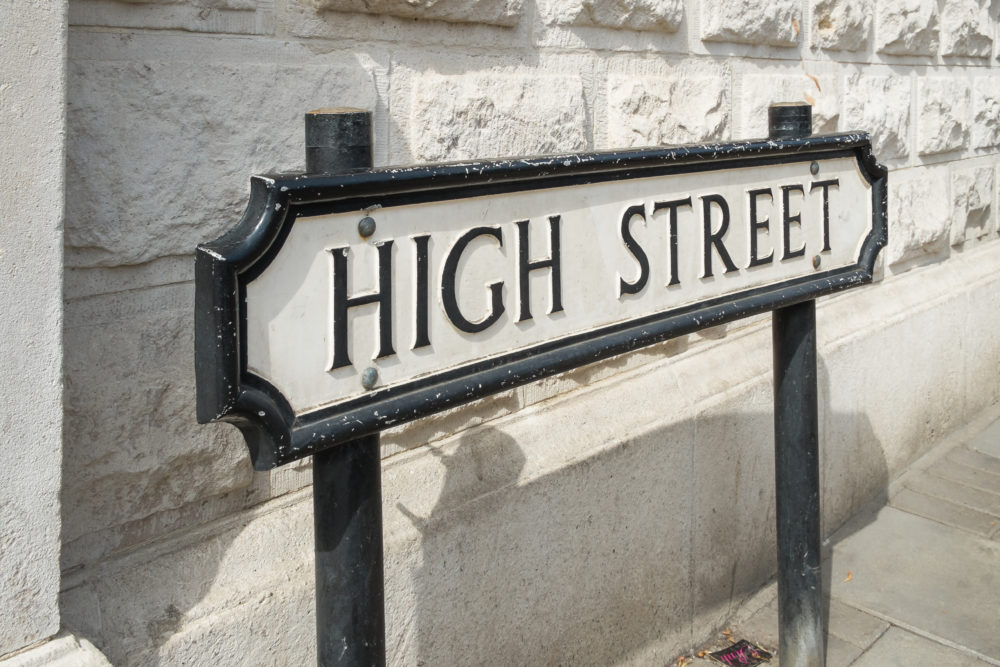It’s true: the high street really is in decline.
Ipsos reports that footfall was down by 4.2 per cent from 2017 (that’s around 3 million fewer shoppers) and around 1,300 store closures left over 7 million square foot of empty retail space.
A lot of large retailers focused on maximising profits by axing branches, leaving many high street units unused.

The survey also found that 75 per cent of respondents claimed to be saddened by the decline of UK high streets.
Worryingly, a quarter say that they’re indifferent to the decline, which is likely due to apathy with decades of outdated planning.
Almost 40 per cent said they do most or all of their shopping online. Meanwhile, 28 per cent prefer to do their shopping in-store and 34 per cent claim that it’s around 50/50.
This is backed up by recent ONS data which shows that £1 in every fiver is now being spent online by UK shoppers.
A striking 20 per cent felt that their visits to the high street were months apart. Mostly because they aren’t currently finding value in what’s on offer.
For us here at SmallBusiness.co.uk, it’s promising to hear that over half of those surveyed (56 per cent) prefer to spend their money with independent local retailers rather than chains. Independent retailers are more likely to give a tailored service which is favoured by customers.
Which type shops are successful?
The Centre of Retail Research reveals that these are the types of business that prospered and withered in 2018.
On the left-hand side you’ll see more modern, experience-driven businesses whereas those on the right-hand side are more traditional.
Thriving businesses in 2018
| More stores opened | More stores closing |
|---|---|
| Convenience stores | Confectionery / news |
| Coffee shops | Fashion and clothing |
| Beauty salons | Music / games / DVDs |
| Nail salons | Shoe shops |
| Restaurants and bars | Card and gift shops |
| Barbers | Betting shops |
| Vape shops | Antique shops |
| Healing / treatments | Bookshops |
| Takeaways | Flooring shops |
| Tattoo parlours | Household goods |
| Cafes | Furniture and textiles |
Property developer, Harper Dennis Hobbs, pinned down the retail locations suffering the most. The following is based on vacancy rates and how available stores meet local needs.
- Shields Road, Byker, Newcastle-upon-Tyne
- Harrow Road, Paddington, London
- Stretford, Greater Manchester
- Tonypandy, Wales
- Walton Road, Liverpool
- Burnt Oak, North London
- Gateshead, Tyne and Wear
- Kirkby, Merseyside
- Selly Oak, Birmingham
- Shettleston Road, Glasgow
What the high street of the future should have
Commercial Finance experts, ABC Finance, have the following suggestions.

More food and drink choices
The ‘night-time economy’ is essential – high streets should have a diverse range of restaurants, food markets and upmarket bars to give people a place to relax in the evening.
Experience-focused retailers
Modern customers like to focus on experiences rather than things. Think immersive layouts, loyalty schemes and personalised service.
Concept stores
Online-only stores can get their products in-store – this is known as ‘showrooming’. It’s becoming more common to have displays where people can see and touch the products before they buy them.
Beacon technology
With beacon technology, you can walk past shops and restaurants and get personalised offers which might encourage you to go in-store.
Pop-up social spaces
No different from your standard pop-up – just areas where sellers can trade from a temporary unit.
More green spaces
It’s simple: more green space leads to a more relaxing customer experience.
More activities
As mentioned, customers are more interested in ‘experiences’ than ‘things’. Escape rooms and climbing centres are popular.
Beauty and wellbeing
This leans more towards wellbeing and spa treatments than hair and nail salons.
Flexible workspaces
High streets should accommodate the cultural shift towards flexible working by providing spaces which are particularly useful to smaller companies and solo workers.
Multipurpose structures
Multipurpose structures are a combination of all of the above. These are hubs where people can live, work and socialise by combining shopping, entertainment and fitness.
Could it work?
When asked about these measures, a third of survey respondents say they would support seeing these on the high street.






